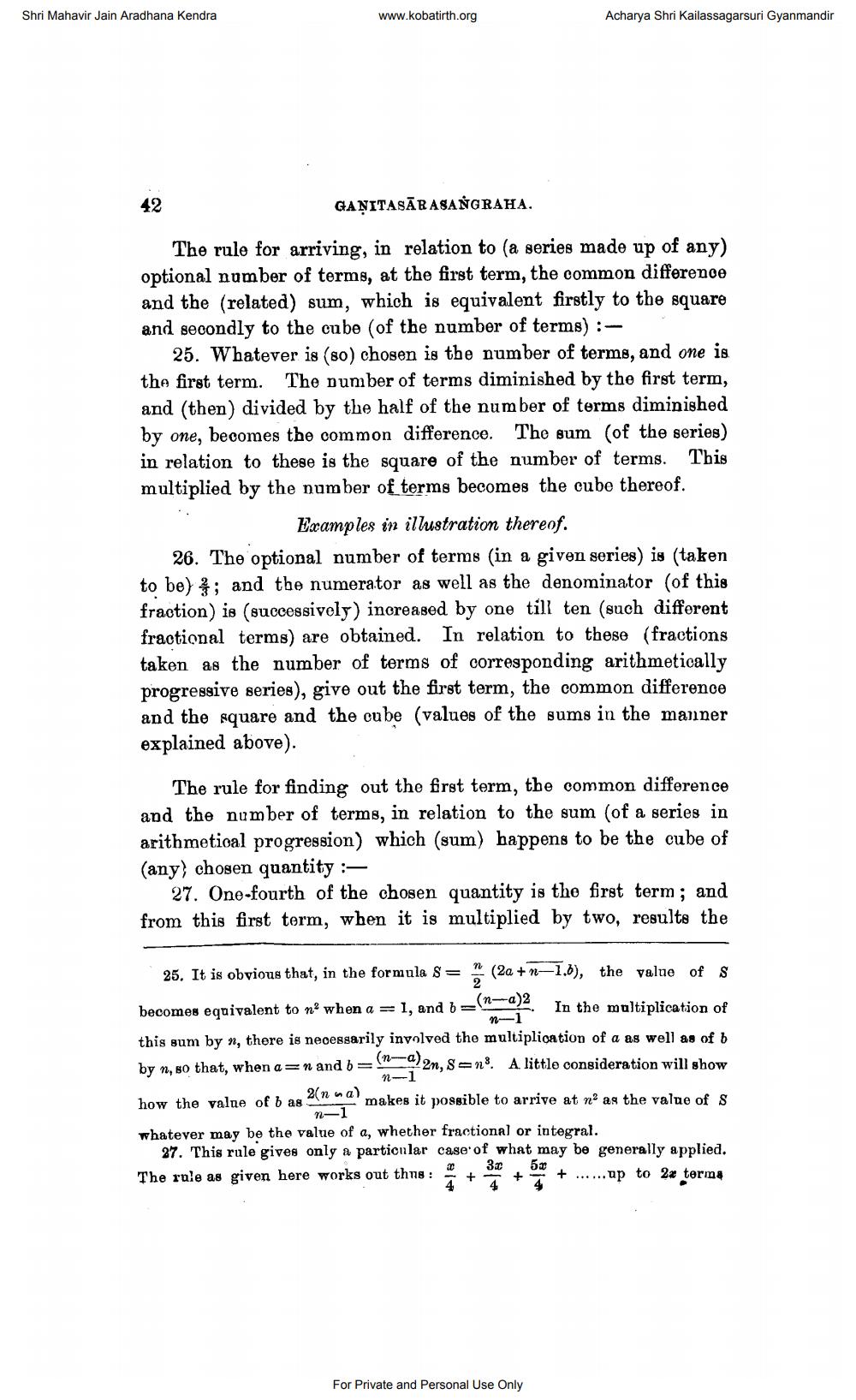________________
Shri Mahavir Jain Aradhana Kendra
www.kobatirth.org
Acharya Shri Kailassagarsuri Gyanmandir
GANITASĀRASANGRAHA.
The rule for arriving, in relation to (a series made up of any) optional number of terms, at the first term, the common difference and the (related) sum, which is equivalent firstly to the square and secondly to the cube (of the number of terms) :
25. Whatever is (80) chosen is the number of terms, and one is the first term. The pumber of terms diminished by the first term, and (then) divided by the half of the number of terms diminished by one, becomes the common difference. The sum of the series) in relation to these is the square of the number of terms. This multiplied by the number of terms becomes the cube thereof.
Examples in illustration thereof. 26. The optional number of terms (in a given series) is (taken to be) 4; and the numerator as well as the denominator (of this fraction) is (successively) increased by one till ten (such different fractional terms) are obtained. In relation to these (fractions taken as the number of terms of corresponding arithmetically progressive series), give out the first term, the common difference and the square and the cube (values of the sums in the manner explained above).
The rule for finding out the first term, the common difference and the number of terms, in relation to the sum of a series in arithmetioal progression) which (sum) bappens to be the cube of (any) chosen quantity :
27. One-fourth of the chosen quantity is the first term; and from this first term, when it is multiplied by two, results the
25. It is obvious that, in the formula S= (2a + n-1.6), the value of s becomes equivalent to no when a = 1, and b=n 24
24.
In the molt
In the multiplication of
nthis gum by n, there is necessarily involved the multiplication of a as well as of b by n, so that, when a=n and b=(n=9) 2n, S=n8 A little consideration will show how the value of b as an
87-1"
- makes it possible to arrive at nag the value of S whatever may be the value of a, whether fractional or integral.
27. This rule gives only a particular case of what may be generally applied. The rule as given here works out thns: +*+*+ ......up to 2x terms
1-
1
For Private and Personal Use Only




